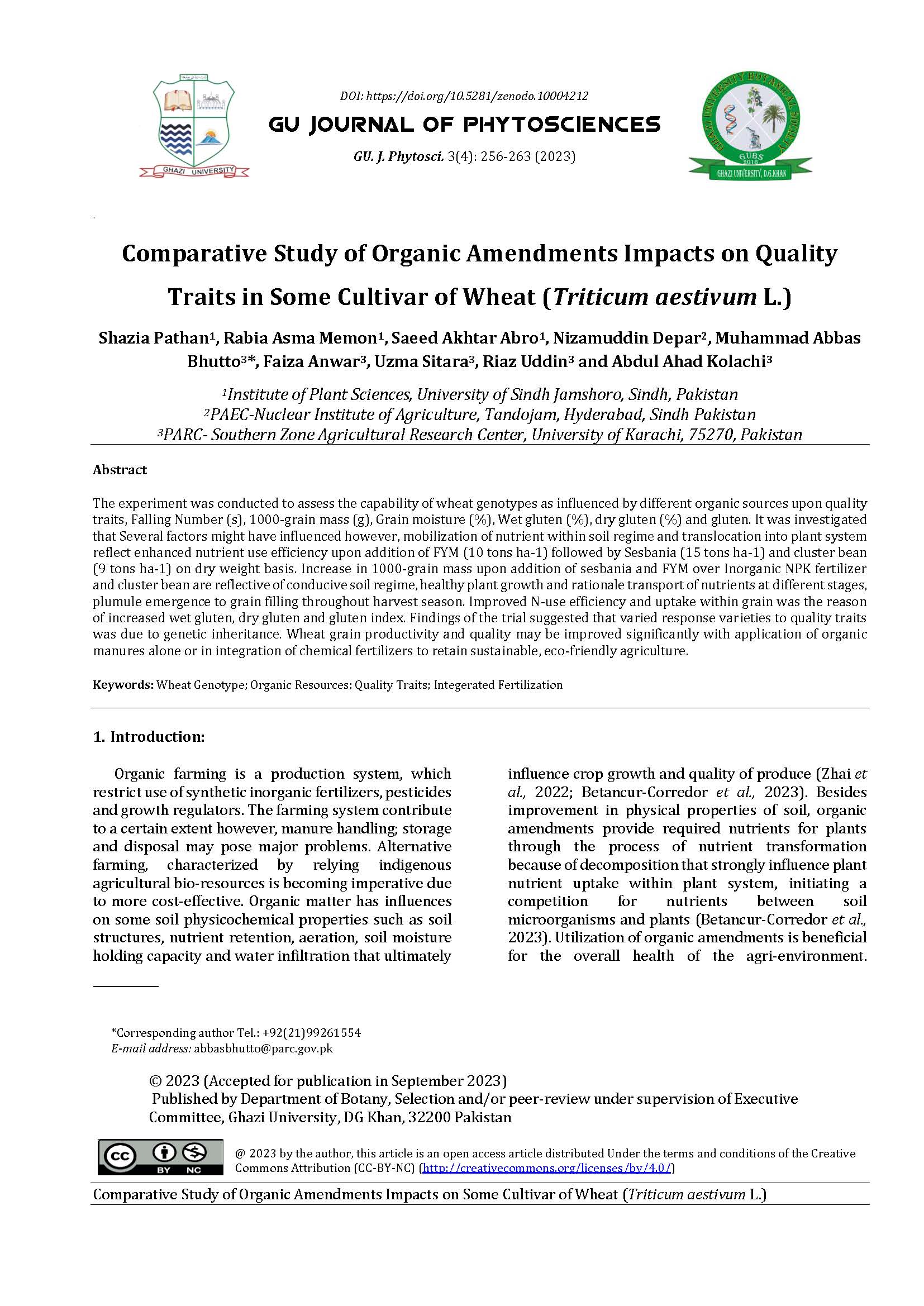Comparative Study of Organic Amendments Impacts on Quality Traits in Some Cultivar of Wheat (Triticum aestivum L.)
Keywords:
Wheat Genotype, Organic Resources, Quality Traits, Integerated FertilizationAbstract
The experiment was conducted to assess the capability of wheat genotypes as influenced by different organic sources upon quality traits, Falling Number (s), 1000-grain mass (g), Grain moisture (%), Wet gluten (%), dry gluten (%) and gluten. It was investigated that Several factors might have influenced however, mobilization of nutrient within soil regime and translocation into plant system reflect enhanced nutrient use efficiency upon addition of FYM (10 tons ha-1) followed by Sesbania (15 tons ha-1) and cluster bean (9 tons ha-1) on dry weight basis. Increase in 1000-grain mass upon addition of sesbania and FYM over Inorganic NPK fertilizer and cluster bean are reflective of conducive soil regime, healthy plant growth and rationale transport of nutrients at different stages, plumule emergence to grain filling throughout harvest season. Improved N-use efficiency and uptake within grain was the reason of increased wet gluten, dry gluten and gluten index. Findings of the trial suggested that varied response varieties to quality traits was due to genetic inheritance. Wheat grain productivity and quality may be improved significantly with application of organic manures alone or in integration of chemical fertilizers to retain sustainable, eco-friendly agriculture.

Downloads
Published
How to Cite
Issue
Section
License
Copyright (c) 2023 The Authors

This work is licensed under a Creative Commons Attribution-NonCommercial 4.0 International License.
All works published by the GU Journal of Phytosciences are freely available to copy, distribute, transmit, and adapt the work provided the original work and source are appropriately cited under a CC BY-NC 4.0 International License. The CC BY-NC licence allows for maximum re-use of open-access materials, and the author has full copyright over their publication. Under this license, users are free to share (copy, distribute, and transmit) and adapt for any purpose, but not for any commercial use (read full legal code).
Under Creative Commons, authors retain copyright in their articles.




